- MOE
- National Parks of Japan
- Nikko National Park
- Guide of Highlights
main body
Highlights of Nikko National Park
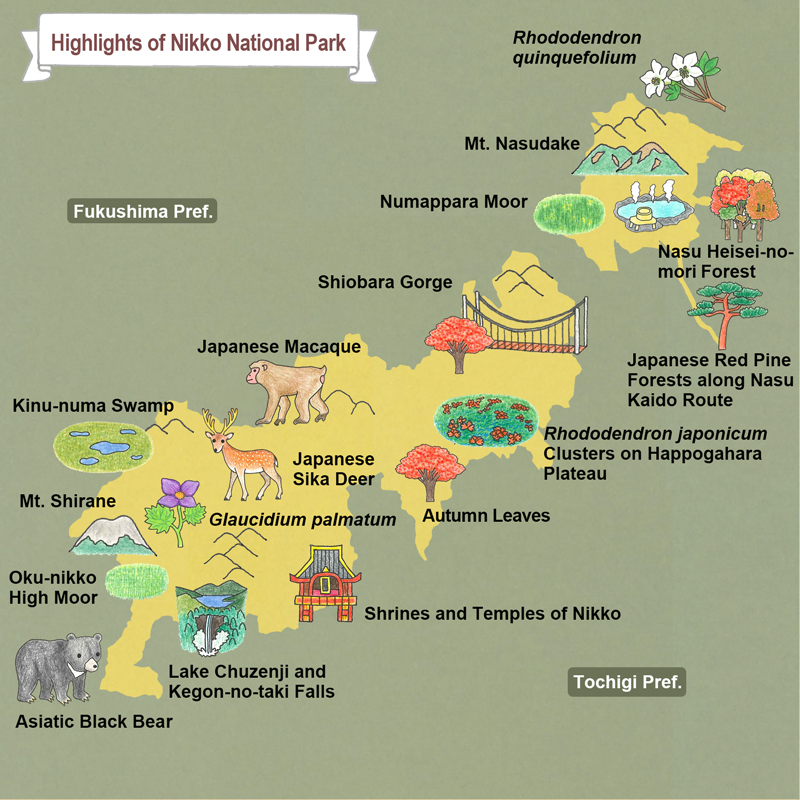 Rhododendron quinquefolium
Mt. Nasudake (Mt. Chausu, Mt. Sambonyari, Mt. Asahi, etc.)
Numappara Moor
Shiobara Gorge Walking Trail
Japanese Macaque (Macaca fuscata)
Kinu-numa Swamp
Mt. Nikko-Shirane
Oku-nikko High Moor
Asiatic Black Bear(Ursus thibetanus japonicus)
Lake Chuzenji and Kegon-no-taki Falls
Shrines and Temples of Nikko
Autumn Leaves
Happogahara Plateau
Nasu Heisei-no-mori Forest
Japanese Sika Deer (Cervus nippon)
Glaucidium palmatum
Rhododendron quinquefolium
Mt. Nasudake (Mt. Chausu, Mt. Sambonyari, Mt. Asahi, etc.)
Numappara Moor
Shiobara Gorge Walking Trail
Japanese Macaque (Macaca fuscata)
Kinu-numa Swamp
Mt. Nikko-Shirane
Oku-nikko High Moor
Asiatic Black Bear(Ursus thibetanus japonicus)
Lake Chuzenji and Kegon-no-taki Falls
Shrines and Temples of Nikko
Autumn Leaves
Happogahara Plateau
Nasu Heisei-no-mori Forest
Japanese Sika Deer (Cervus nippon)
Glaucidium palmatum
Kinu-numa Swamp
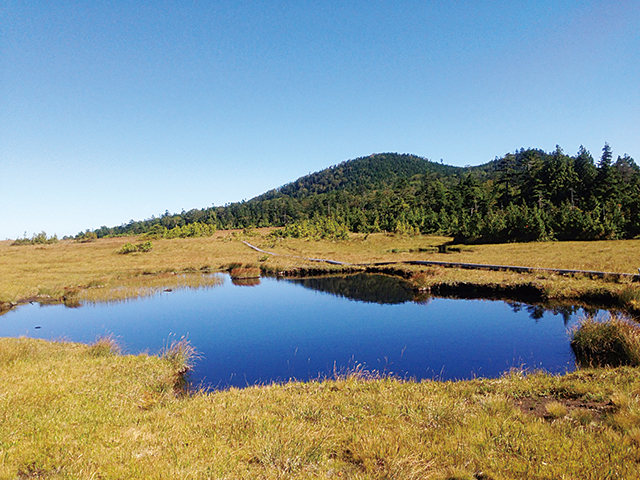
Kinu-numa Swamp
This is the highest-in-elevation marsh in Japan located at 2,030 m above sea level in the headwaters area of the Kinugawa River. The marsh consists of more than 40 big and small ponds, allowing views of alpine plants in summer and colored leaves in autumn.
Mt. Nikko-Shirane
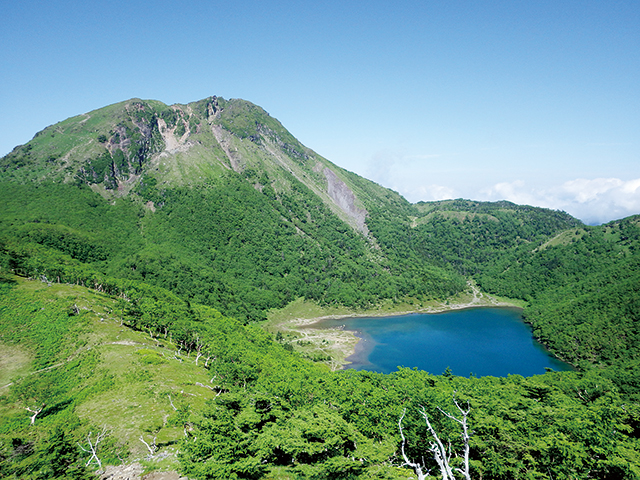
Mt. Nikko-Shirane
Mt. Nikko-Shirane is the highest mountain in the Kanto region located on the border of Tochigi and Gunma prefectures (2,578 m above sea level). You can climb it from Nikko Yumoto Onsen, Marunuma Swamp, and other places.
Oku-nikko High Moor
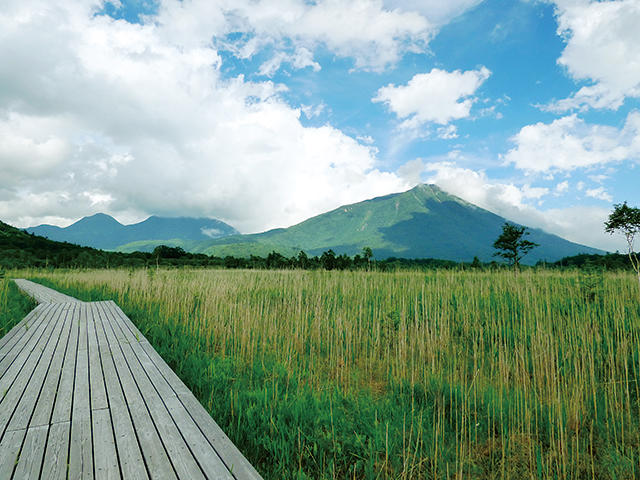
Oku-nikko High Moor
Yunoko, Yukawa, Senjogahara and Odashirogahara are registered as Oku-nikko Shitsugen (Oku-nikko High Moor) in the Ramsar Convention of Wetlands. These sites can be explored using wooden footpaths.
Nikko Yumoto Onsen
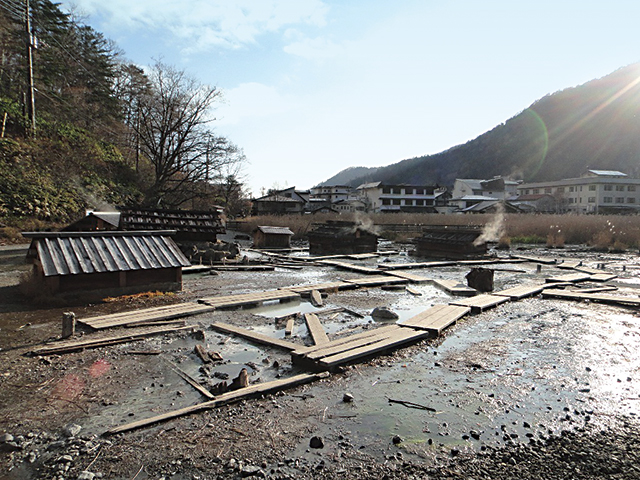
Nikko Yumoto Onsen
Nikko Yumoto Onsen is an old historic hot springs on the north shore of Lake Yunoko and is a base for climbing nearby mountains, trekking, skiing, etc.
Lake Chuzenji and Kegon-no-taki Falls
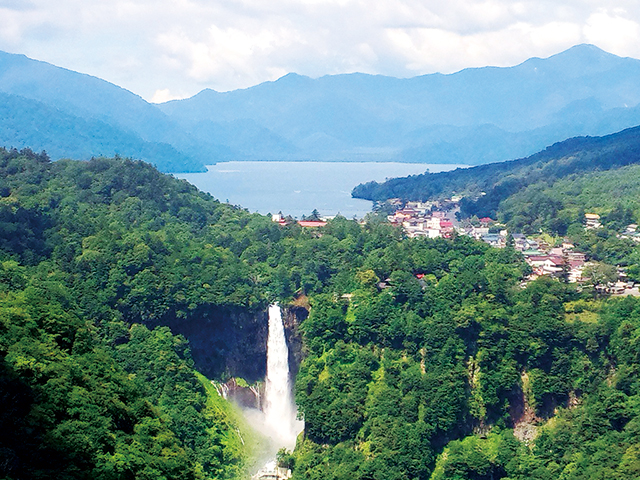
Lake Chuzenji and Kegon-no-taki Falls
Lake Chuzenji is a lake created by lava from Mt. Nantai and a dam, and there is Kegon no-taki Falls (97 m high) at its debrochure. The Chugushi area around Lake Chuzenji is popular as a base for sightseeing.
Setoaikyo Canyon
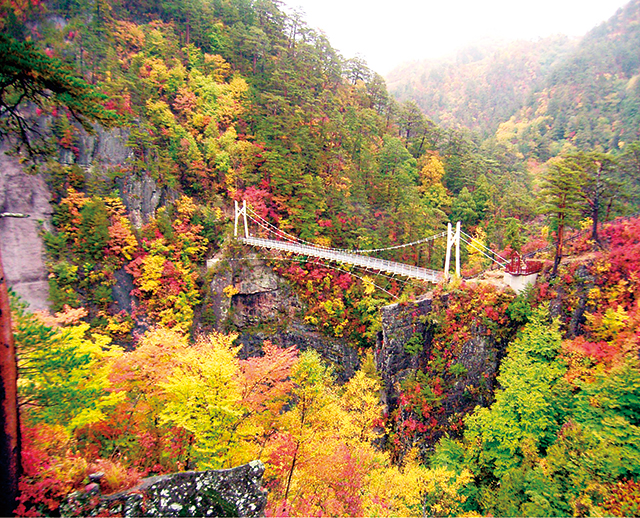
Setoaikyo Canyon
Setoaikyo Canyon, located upstream of Kinugawa River, is about 100 m deep with 2 km long sheer cliffs. It is also known as a sight for beautiful colored leaves in autumn.
Kirifuri Highland
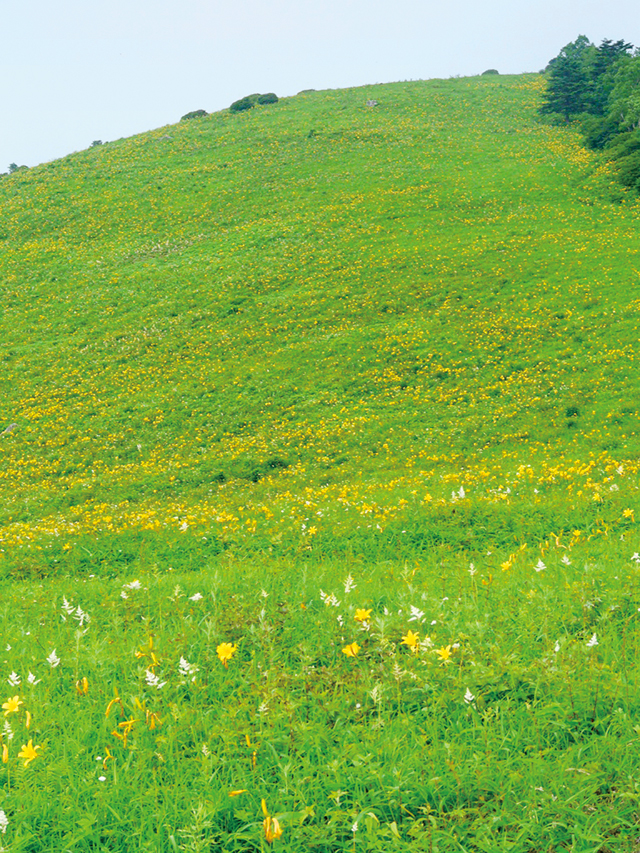
Kirifuri Highland
The plateau spreads on the north side of Nikko's city area. There is a colony of broad dwarf day lily and Kirifuri-no-taki Falls, allowing visitors to enjoy hiking and camping.
Shrines and Temples of Nikko

Shrines and Temples of Nikko
The entrance to the National Park is lined with shrines and temples that are registered as World Cultural Heritage sites, including Nikko Toshogu Shrine, Futarayama-jinja Shrine, and Rinno-ji Temple. Together with the lush forest that envelops the surroundings, these create unique sceneries fuse the natural environment with historical culture.
Kinugawa River valley

Kinugawa River valley
The beauty of Kinugawa River valley is very famous, and visitors not only see the magnificent view from the ground but can enjoy boat tours and rafting.
Happogahara Plateau
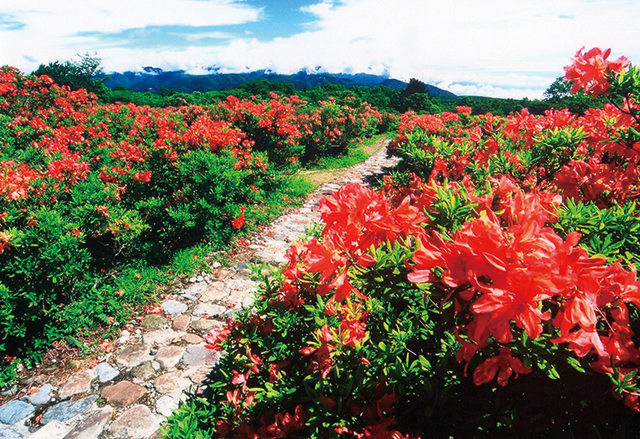
Photo by Yaita City
Happogahara Plateau
Happogahara is a plateau on the eastern base of Mt. Takahara and visitors can enjoy hiking and camping. Populated with nearly 200,000 stubs of Rhododendron japonicum, the entire area is ablaze with blooming red flowers in early summer.
Shiobara Gorge Walking Trail
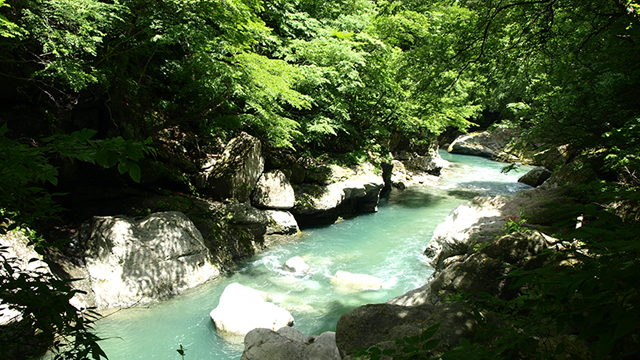
Shiobara Gorge Walking Trail
There are three courses available in and around Shiobara Gorge from which visitors can choose depending on their physical strength and interest. Walk along a valley covered in rich green (red in autumn) while looking at falls, suspension bridges, and marshlands.
Numappara Moor

Photo by Nasushiobara City
Numappara Moor
A wetland located at 1,230 m above sea level and is a sight to observe seasonal plants. Among them, the broad dwarf day-lily flowers blooming all over from early to mid-July are superb.
Mt. Nasudake (Mt. Chausu, Mt. Sambonyari, Mt. Asahi, etc.)

Mt. Nasudake (Mt. Chausu, Mt. Sambonyari, Mt. Asahi, etc.)
This is the collective name of several volcanoes on the border of Tochigi and Fukushima prefectures. It consists of Mt. Chausu, which is still releasing gas and steam; Mt. Asahi characterized by its sheer rocky cliffs; and Mt. Sambonyari, the highest peak of Mt. Nasudake surrounded by forests.
Nasu Nature Study Paths

Nasu Nature Study Paths
This tails connects Yahata Onsen, Benten Onsen, and Omaru Onsen. Some of the highlights here are the azalea flower tunnel of Yahata Park and views of Mt. Chausu.
Nasu Heisei-no-mori Forest

Nasu Heisei-no-mori Forest
This is an area of approximately 560 ha that lies partly on the former site of the Nasu Imperial Villa, where the Ministry of the Environment took over and opened to the public. At this expansive natural forest of Japanese beech and other trees, various nature-experience events, and study programs are offered to the public.
Wildlife & Plants
Glaucidium palmatum

Glaucidium palmatum
A endemic species to Japan. The word "shirane" in the name comes from Mt. Nikko-Shirane, once home to a large colony of the flowers. Now greatly reduced due to predation by deer and illegal digging, the flowers are protected by ongoing initiatives.
Rhododendron quinquefolium

Photo by Nasu Ranger Office
Rhododendron quinquefolium
Also known in Japanese as the five-leaved rhododendron for the configuration of its leaves, this flower reveals white blooms in spring.
Autumn Leaves

Autumn Leaves
The area of the Nikko, Kinugawa, and Kuriyama are a deciduous broad-leaved forest zone heavy with Japanese beech and Mongolian oak, along with maple and other trees as well. The fall foliage of the area is splendid.
Japanese Macaque (Macaca fuscata)
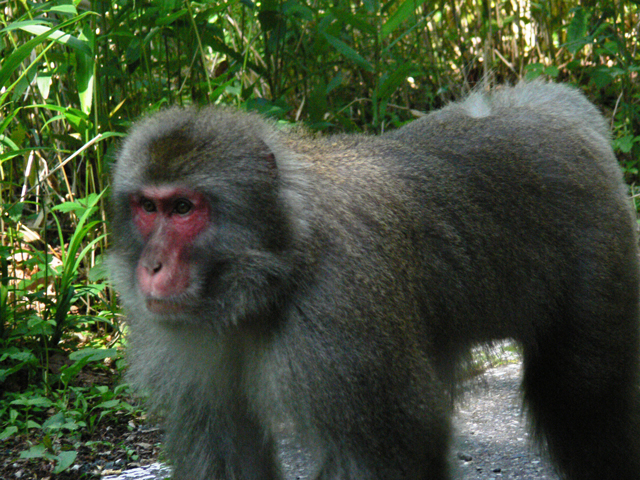
Japanese Macaque (Macaca fuscata)
These monkeys are found throughout the Nikko area, with the exception of the mountains. In response to increasing incidents involving monkeys stealing bags from tourists, Nikko City enacted the nation's first ordinance prohibiting the feeding of monkeys and worked to raise awareness of the issue, resulting in a considerable decrease in the problem in recent years.
Japanese Sika Deer (Cervus nippon)

Japanese Sika Deer (Cervus nippon)
Belongs to the large herbivorous mammals. The males have magnificent antlers. Sika deer can often be spotted in Oku-Nikko. However, their population has expanded excessively and they have become a cause of severe damage to moors and forest vegetation.
Asiatic Black Bear (Ursus thibetanus japonicus)
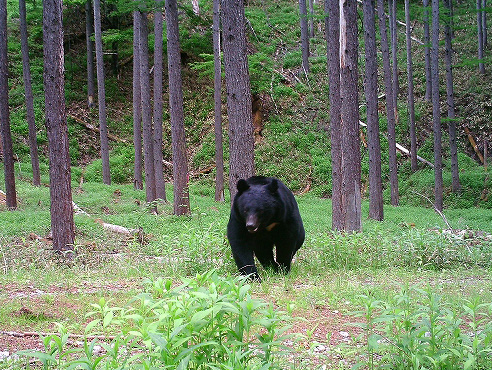
Asiatic Black Bear (Ursus thibetanus japonicus)
The largest terrestrial mammal on Honshu. The Asian black bear is distinguished by the crescent-shaped or V-shaped white marking on the chest. It inhabits forested zones, and may be encountered while hiking. Hikers should understand its ecology and take care to avoid unexpected encounters.
